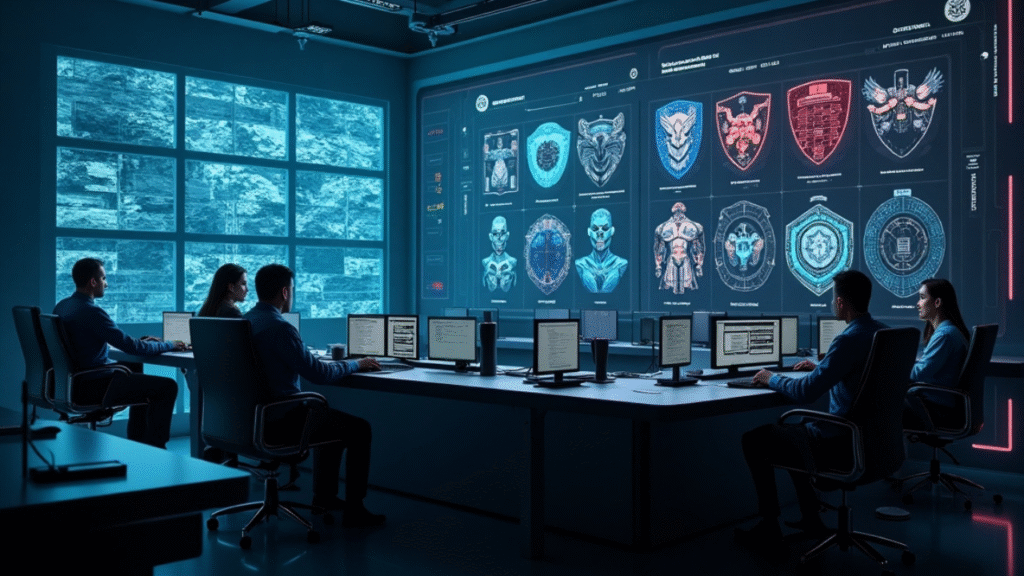The nature of warfare is evolving faster than ever. Unlike past eras where raw manpower and conventional weapons dominated, today’s military technology innovations are driven by artificial intelligence (AI), robotics, cybersecurity, drones, and space-based defense systems. Modern militaries are shifting toward a future defined by digital transformation, automation, and precision technology, reshaping not only how wars are fought but also how conflicts are prevented.
This article explores the latest military technology innovations, their impact on the global security landscape, and what the future of warfare may look like in the coming decades.
Artificial Intelligence in Military Applications
Artificial intelligence (AI) has become the backbone of modern defense strategies. Militaries worldwide are integrating AI into:
- Decision-making systems – AI analyzes battlefield data in real-time to support faster, smarter tactical decisions.
- Predictive analytics – AI-driven simulations forecast enemy movements and supply chain needs.
- Autonomous operations – Self-learning algorithms enable unmanned systems (drones, tanks, ships) to adapt to dynamic battlefield conditions.
For example, the U.S. Department of Defense and China’s PLA are heavily investing in AI-driven command-and-control systems, highlighting how AI in military applications is now a race for technological dominance.

Autonomous Drones and Unmanned Systems
Drones are no longer limited to surveillance; they are now lethal assets in combat. Key trends include:
- Swarm drones: Hundreds of small autonomous drones working together to overwhelm enemy defenses.
- Combat UAVs (Unmanned Aerial Vehicles): Equipped with advanced weapons for precision airstrikes.
- Unmanned ground and naval vehicles: Robots capable of handling reconnaissance, logistics, and even combat missions without risking human soldiers.
These autonomous drones in defense are revolutionizing air and ground warfare, offering speed, cost-efficiency, and reduced human casualties.
Cybersecurity in Modern Warfare
Wars are no longer fought only on land, sea, or air—they’re increasingly fought in cyberspace.
- Cyber defense systems protect critical infrastructure, communication networks, and satellite systems from enemy hacks.
- Cyberattacks are being used as strategic weapons to disable power grids, disrupt financial systems, and spread disinformation.
- Zero-trust architectures are becoming vital in military cybersecurity to safeguard against insider threats.
Given that cybersecurity in modern warfare is now as critical as physical defense, governments are investing billions into cyber resilience and AI-powered cyber defense tools.
Robotics in the Military Industry
From robotic exoskeletons that give soldiers superhuman strength to autonomous combat robots, robotics in the military industry is advancing rapidly.
- Robotic soldiers: Ground robots capable of carrying weapons or performing reconnaissance.
- Exoskeletons: Wearable robotic suits that enhance soldiers’ endurance, strength, and protection.
- Logistics robots: Automating resupply missions, reducing the need for human involvement in dangerous environments.
Robotics reduces the risk to human life while improving battlefield efficiency and response time.
Space-Based Defense Technologies
As space becomes a new domain of competition, militaries are investing in next-generation defense systems:
- Satellite-based surveillance: High-resolution satellites providing 24/7 global monitoring.
- Anti-satellite weapons (ASATs): Technologies to disable enemy satellites during conflict.
- Space communication systems: Secure, quantum-encrypted satellite networks for military use.
The militarization of space is reshaping the future of warfare, with both the U.S. Space Force and China expanding their space defense capabilities.

Smart Weapons and Hypersonic Missiles
The rise of precision-guided munitions and hypersonic weapons marks another leap forward in defense tech:
- Hypersonic missiles travel at speeds exceeding Mach 5, making them nearly impossible to intercept.
- Smart weapons use AI to adjust their trajectory mid-flight for maximum accuracy.
- Directed-energy weapons (DEWs), like high-powered lasers, are being tested to disable drones and enemy missiles.
These next-generation military technologies ensure superiority in both offense and defense.
Digital Transformation in Defense
Modern militaries are adopting Industry 4.0 technologies such as IoT, 5G, and digital twins to optimize defense operations.
- Digital twins simulate battlefields and equipment performance.
- Blockchain in defense supply chains ensures secure and transparent military logistics.
- 5G-enabled military networks allow seamless communication across land, sea, air, and space forces.
This digital transformation in defense is making military operations smarter, faster, and more connected.
Ethical and Security Concerns
With great power comes great responsibility, and military innovations raise serious concerns:
- Autonomous weapons: Should robots have the power to make life-or-death decisions?
- Cyber warfare laws: Who is accountable for digital attacks across borders?
- AI bias and ethics: Can we trust algorithms in high-stakes military decisions?
- Global arms race: Rapid innovation risks triggering an uncontrollable escalation in warfare technologies.
Balancing innovation with ethical responsibility will be one of the greatest challenges for the future of military technology.

Future Outlook: The Next Frontier of Defense Tech
The future of warfare is defined by integration—AI, robotics, drones, cybersecurity, and space defense systems working in synergy. We can expect:
- Fully autonomous drone swarms replacing traditional air forces.
- AI-powered battlefield commanders making real-time strategic decisions.
- Nanotechnology and biotechnology enhancing soldiers’ resilience.
- Military applications of quantum computing for unbreakable encryption.
The military industry trends 2025 and beyond point to a world where technology doesn’t just support soldiers—it becomes a central player in combat itself.
Conclusion
From AI-driven decision-making and robotics to cybersecurity and hypersonic weapons, military technology is advancing at an unprecedented pace. These innovations promise greater precision, safety, and efficiency, but they also raise ethical, political, and security challenges that cannot be ignored.
As global powers continue to invest in defense innovation, the future of warfare will be shaped not by the size of armies but by the intelligence of the technologies they wield.








